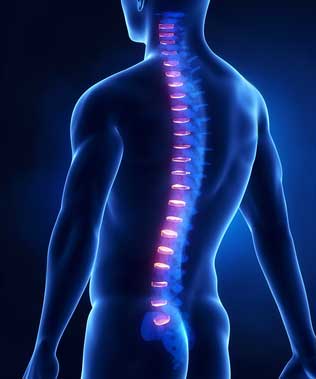 We customize individual treatment plans to maximize healing and recovery. We are sensitive to individual adjusting needs.
We customize individual treatment plans to maximize healing and recovery. We are sensitive to individual adjusting needs.
Our office offers a variety of treatment options which include:
Force and Non-force Adjusting Techniques
Diversified Technique (DT) is the most commonly used adjustment technique by chiropractors. Diversified is characterized by a high-velocity, low-amplitude thrust. Diversified is considered the most generic chiropractic manipulative technique and is differentiated from other techniques in that its objective is to restore proper movement and alignment of spine and joint dysfunction
Gonstead Examination procedures include static and dynamic palpation primarily of paraspinal bone structure and soft tissue, visualization of spinal motion, posture, gait and physical signs of inflammation near the joints
Activator The Activator Method Chiropractic Technique is a chiropractic treatment method and device used as an alternative to manual manipulation of the spine or extremity joints. This instrument which is generally regarded as a softer chiropractic treatment technique is commonly used with pediatric and geriatric patients and patients with osteoporosis.
SOT Sacro Occipital Technique (SOT) is a comprehensive, gentle and innovative technique of Chiropractic. It is so named because of the relationship between the Sacrum (base of the spine) and the Occiput (base of the skull). The main corrective mechanisms employed in the correction of these subluxation patterns are pelvic blocks and hands-on adjusting techniques.
Adjunctive Therapies
Electrical Muscle Stimulation (EMS) impulses are generated by a device and delivered through electrodes on the skin in direct proximity to the muscles to be stimulated. This mimics the action potential coming from the central nervous system, causing the muscles to contract and fatigue aiding the practitioner to further treatment on muscle spasms, reducing pain and increasing range of motion. Conditions which EMS may be used for treatment include the following examples: musculoskeletal injuries, such as damage to bones, joints, muscles, ligaments and tendons.
Ultrasound Ultrasound is applied using an applicator that is in direct contact with the patient’s skin. There are three primary benefits to ultrasound. The first is the speeding up of the healing process from the increase in blood flow in the treated area. The second is the decrease in pain from the reduction of swelling and edema. The third is the gentle massage of muscles tendons and/ or ligaments. Conditions which ultrasound may be used for treatment include the follow examples: Ligament Sprains, Muscle Strains, Tendonitis, Joint Inflammation, Plantar fasciitis, Metatarsalgia, Facet Irritation, Impingement syndrome, Bursitis, Rheumatoid arthritis, Osteoarthritis, and Scar Tissue Adhesion.
Moist Heat Moist heat therapy is one of the simplest, safest, and most effective techniques for injury, pain, or discomfort in muscles and joints. Moist heat can be used to relieve stiffness, improve circulation, and ease muscle pain and soreness as well as in conjunction with other treatments such as such as electrical muscle stimulation or manual trigger point therapy.
Manual Trigger Point Therapy A successful treatment protocol relies on identifying trigger points, resolving them by using use myotherapy or deep pressure. Trigger point pain frequently radiates from these points of local tenderness to broader areas, sometimes distant from the trigger point itself. This treatment can frequently resolve pain syndromes unaided by other treatment techniques.
Graston Muscle Therapy A therapeutic method for diagnosing and treating disorders of the skeletal muscles and related connective tissue using stainless steel tools in order to detect and resolve trigger points and adhesions in the muscles and tendons.
Intermittent Mechanical Traction This technology is safe and pain free and is helpful in reducing the pain, numbness and weakness associated with herniated disc and spine joint disease in both neck and low back.
Manual Traction Hands on Traction applied by the Doctor that involves a continuous steady pull or intermittent pulls. The purpose of manual traction is to provide a very specific and controlled distraction force to the spine or joint in order to alleviate pain or compression.
Neuromuscular Reeducation is a technique used in our office to restore normal movement. It is used to improve balance, coordination, posture, kinesthetic sense and proprioception.
Review of daily habits as well as exercise routines.
Corrective measures taken to ergonomically limit patient injury.
Stretching routines developed and personalized.
Sensitive to individual adjusting needs.
 Dr. Laura Heisler Aspen Healing Center
Dr. Laura Heisler Aspen Healing Center